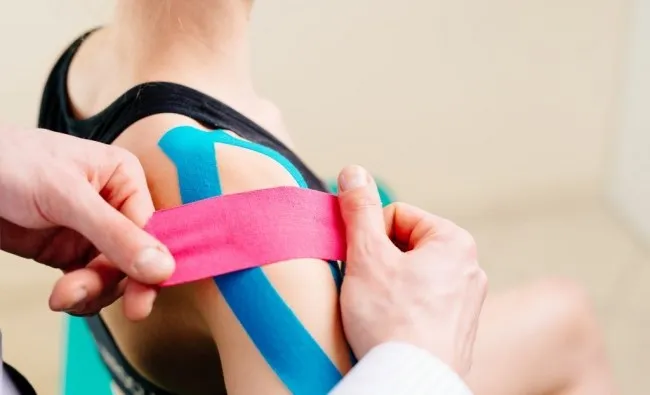Kinesiology taping has become a go-to tool for athletes, fitness enthusiasts, and rehabilitation professionals. Whether you’re a personal trainer, physiotherapist, or simply someone passionate about body mechanics and injury prevention, mastering kinesiology taping can elevate your skillset and effectiveness. If you’re looking to deepen your understanding and practical abilities, enrolling in the right kinesiology taping courses is essential.
In this guide, we’ll walk you through a step-by-step process to find and benefit from top kinesiology taping courses that suit your professional or personal goals.
Understand the Basics of Kinesiology Taping
Before diving into any course, it’s important to understand what kinesiology taping is and how it works. This elastic therapeutic tape is designed to facilitate healing, provide support, and improve performance without restricting motion. The technique is widely used in physiotherapy, sports medicine, and fitness recovery.
Look for a course that starts with foundational knowledge, such as:
-
The history and science of kinesiology taping
-
Basic anatomy and biomechanics
-
Common applications for athletic performance and injury recovery
A strong foundation will prepare you to fully understand more advanced taping methods later in your training.
Choose the Right Learning Format
Kinesiology taping courses come in various formats, including:
-
In-person workshops: Ideal for hands-on practice and real-time feedback
-
Online courses: Flexible and accessible, great for self-paced learners
-
Hybrid programs: A combination of live instruction and digital learning
If you’re balancing a busy schedule or prefer learning at your own pace, online kinesiology taping courses might be the best fit. On the other hand, in-person courses allow for direct supervision and correction, which can be crucial for mastering application techniques.
Make sure to assess your learning style and availability before choosing the right course format.
Look for Accredited or Certified Instructors
When evaluating kinesiology taping courses, instructor credentials matter. Look for courses taught by certified physiotherapists, athletic trainers, or other health professionals with real-world experience. Many reputable courses are affiliated with professional bodies like:
-
Kinesio® Taping Association International (KTAI)
-
RockTape® or SpiderTech® certification programs
-
Continuing education providers approved by physiotherapy or fitness organizations
A certified instructor not only ensures quality training but also adds credibility to your own expertise once you complete the course.
Evaluate Course Content and Learning Outcomes
Not all kinesiology taping courses offer the same depth or focus. To make the most of your time and investment, review the syllabus to ensure the following areas are covered:
-
Techniques for common injuries (e.g., shoulder impingement, IT band syndrome, plantar fasciitis)
-
Application for performance enhancement (e.g., posture correction, muscle activation)
-
Contraindications and safety protocols
-
Case studies and real-life application scenarios
The best courses also include assessments, practical exams, or certifications of completion to validate your learning.
Practice Regularly to Reinforce Techniques
Once you’ve enrolled and started your kinesiology taping course, practice is key. Taping is a hands-on skill, and like any manual therapy, proficiency comes with repetition. Use the following tips to improve:
-
Practice on yourself or volunteers regularly
-
Record your taping sessions and review your technique
-
Take part in community groups or online forums to exchange feedback
-
Attend refresher workshops or advanced modules
The more you practice, the more confident and competent you’ll become.
Stay Updated with Continued Education
Health and fitness trends evolve, and so does taping technology and methodology. Don’t stop at one course. Continue your education with:
-
Advanced kinesiology taping techniques
-
Courses that integrate taping with other modalities like dry needling, cupping, or manual therapy
-
Specialized applications for pediatric, geriatric, or neurological populations
This commitment to continuous improvement will keep you ahead in your field and offer more value to your clients or patients.
Apply Your Skills in Real-World Scenarios
Theory is important, but applying what you learn in your kinesiology taping courses to real-world situations is the true test of your skills. Depending on your profession or environment, this could mean:
-
Helping gym clients manage minor injuries or improve muscle performance
-
Supporting athletes during training and competitions
-
Assisting patients in rehabilitation settings for faster recovery
Document your success stories and build a portfolio to showcase your expertise.
Invest in Quality Taping Supplies
Along with education, having the right tools matters. Not all kinesiology tape is created equal. Choose products that are skin-friendly, latex-free, water-resistant, and durable. High-quality tape ensures better results and minimizes skin irritation or premature peeling.
Trusted brands include RockTape, Kinesio Tex Gold, and SpiderTech. For a reliable source of professional-grade supplies, we recommend [e-physioneeds]—a trusted provider for physiotherapy essentials including kinesiology tape, scissors, and more.
Conclusion
Whether you’re a fitness coach, athlete, or healthcare professional, mastering kinesiology taping can significantly enhance your ability to support injury prevention and performance. By choosing the right kinesiology taping courses, practicing consistently, and staying updated with the latest techniques, you’ll be equipped to apply this versatile tool with confidence and precision.
Ready to Elevate Your Practice?
Explore top-rated Kinesiology Taping Courses and stock up on premium taping supplies at [e-physioneeds]—your one-stop shop for professional physiotherapy equipment
